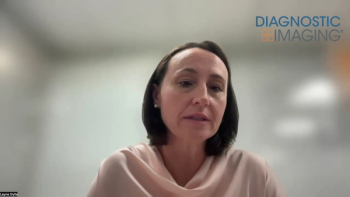
Medicare fee schedule hits radiologists hard
Radiologists received a rude surprise when they read the mostrecent proposal from the Health Care Financing Administrationfor Medicare fees based on a resource-based, relative-value scale(RVS). The proposed regulations were published last month in
Radiologists received a rude surprise when they read the mostrecent proposal from the Health Care Financing Administrationfor Medicare fees based on a resource-based, relative-value scale(RVS). The proposed regulations were published last month in theFederal Register prior to a period of public comment.
The regulations would chop radiologists' fees 32% by 1996.After three years of working with HCFA to achieve a viable professionalreimbursement system (SCAN 10/4/90), radiologists had hoped forbetter treatment. Radiology fees under Medicare have already declinednearly 18% since 1988, when negotiations began with HCFA for anew payment scheme.
"There is a tremendous discrepancy between what we expected,what we think ought to have been done, and what has been done,"said Dr. James M. Moorefield, chairman of the American Collegeof Radiology. "It is a show of bad faith on the part of theBush administration. Clearly, the intent and spirit of Congressseems to be breached and we're very disappointed."
The impact of reduced professional fees on the medical imagingequipment market is uncertain. On the negative side, radiologistswho own their own equipment will likely have less money to purchasenew scanners.
However, some observers--including HCFA--believe that the numberof medical procedures will increase as doctors compensate forlower fees. This would result in increased equipment utilization.Radiologists are being squeezed financially even further in anattempt by HCFA to counteract the volume effect.
HCFA HAS PROPOSED a $26.87 conversion factor to compute professionalfees. The conversion factor, subject to geographic adjustments,will be multiplied by the number of relative values attributedto each procedure.
The agency anticipates that "losers" under the RVSwill increase their volume of procedures to compensate for thereduced payment rates--even though there will be a legislativemechanism in place to prevent such volume increases. The MedicareVolume Performance Standard (MVPS) will reduce the annual Medicarebudget in concordance with inappropriate volumes.
Despite MVPS, the agency slashed 10.5% from its original conversionfigure to compensate for increases in procedures. Another 6% wassubtracted to achieve congressionally mandated budget neutralityfor the fee schedule's first year.
Part B Medicare Annual Data (BMAD), which tracks procedurevolume by specialty, demonstrates that, while radiologists havesuccumbed to cuts in the past three years, they have not increasedutilization, Moorefield said.
"The BMAD data shows no behavioral change, and the growthrate of radiological procedures under Medicare in fact abatedor diminished when we went on the fee schedule in 1989,"he said.
The ACR also takes issue with the way the behavioral offsethas been applied to physicians across the board.
"Clearly, some specialties could not augment their servicesor volume by even the wildest stretch of the imagination,"he said. "For example, anesthesiologists could not possiblyadd to the number of cases they do. Radiologists would have adifficult time, and certainly could not do so directly, sincethey are a referral specialty."
Newsletter
Stay at the forefront of radiology with the Diagnostic Imaging newsletter, delivering the latest news, clinical insights, and imaging advancements for today’s radiologists.



























